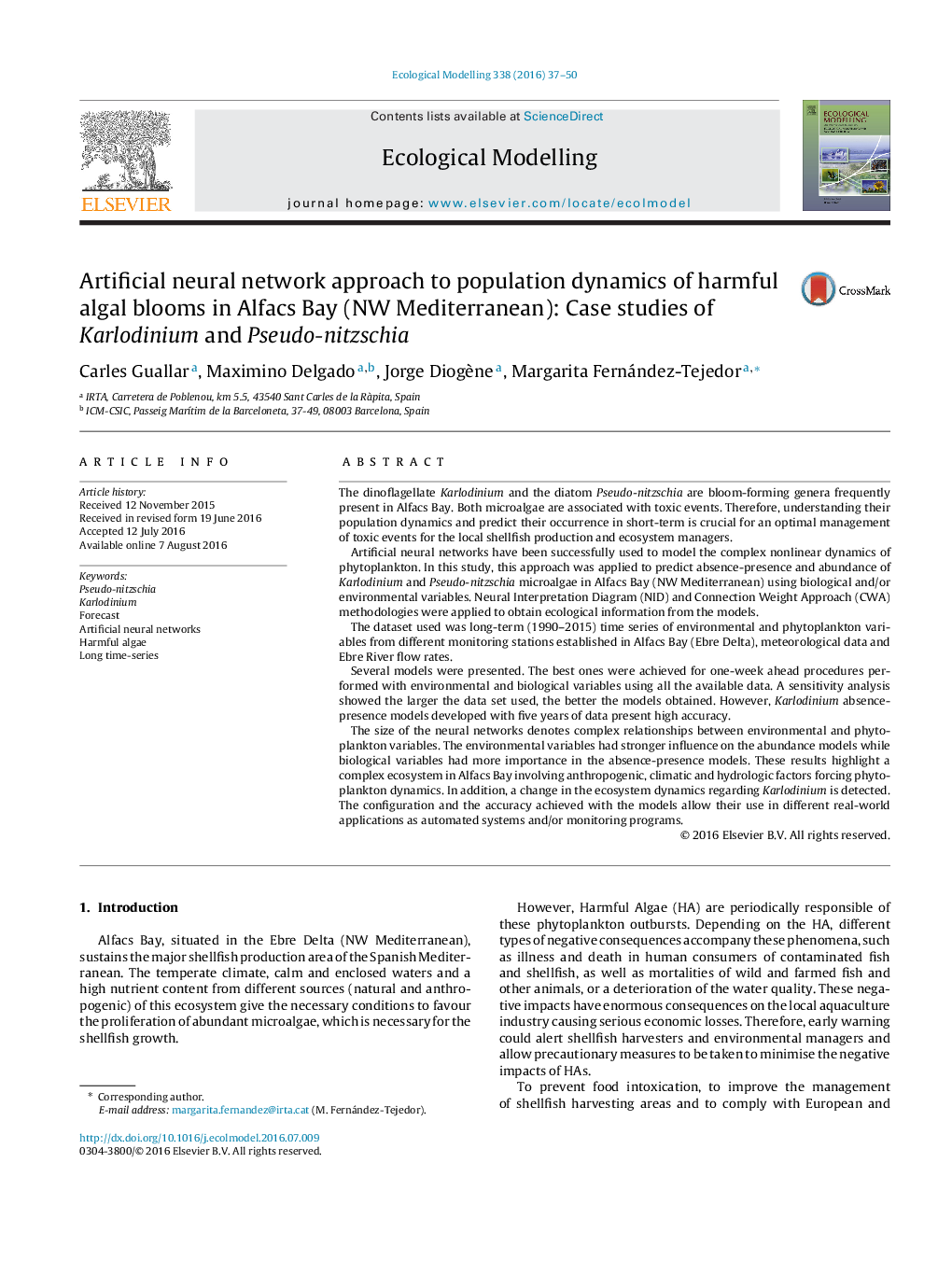| کد مقاله | کد نشریه | سال انتشار | مقاله انگلیسی | نسخه تمام متن |
|---|---|---|---|---|
| 6295996 | 1617409 | 2016 | 14 صفحه PDF | دانلود رایگان |

â¿¢We have developed short-term forecast models for Karlodinium and Pseudo-nitzschia.â¿¢Biological and environmental 20-years long time-series were used.â¿¢Absence-presence and abundance models with Artificial Neural Networks were evaluated.â¿¢Biological and environmental factors are more important for absence-presence and abundance models, respectively.â¿¢The model characteristics allow their use in monitoring and in automated systems.
The dinoflagellate Karlodinium and the diatom Pseudo-nitzschia are bloom-forming genera frequently present in Alfacs Bay. Both microalgae are associated with toxic events. Therefore, understanding their population dynamics and predict their occurrence in short-term is crucial for an optimal management of toxic events for the local shellfish production and ecosystem managers.Artificial neural networks have been successfully used to model the complex nonlinear dynamics of phytoplankton. In this study, this approach was applied to predict absence-presence and abundance of Karlodinium and Pseudo-nitzschia microalgae in Alfacs Bay (NW Mediterranean) using biological and/or environmental variables. Neural Interpretation Diagram (NID) and Connection Weight Approach (CWA) methodologies were applied to obtain ecological information from the models.The dataset used was long-term (1990â¿¿2015) time series of environmental and phytoplankton variables from different monitoring stations established in Alfacs Bay (Ebre Delta), meteorological data and Ebre River flow rates.Several models were presented. The best ones were achieved for one-week ahead procedures performed with environmental and biological variables using all the available data. A sensitivity analysis showed the larger the data set used, the better the models obtained. However, Karlodinium absence-presence models developed with five years of data present high accuracy.The size of the neural networks denotes complex relationships between environmental and phytoplankton variables. The environmental variables had stronger influence on the abundance models while biological variables had more importance in the absence-presence models. These results highlight a complex ecosystem in Alfacs Bay involving anthropogenic, climatic and hydrologic factors forcing phytoplankton dynamics. In addition, a change in the ecosystem dynamics regarding Karlodinium is detected. The configuration and the accuracy achieved with the models allow their use in different real-world applications as automated systems and/or monitoring programs.
Journal: Ecological Modelling - Volume 338, 24 October 2016, Pages 37-50